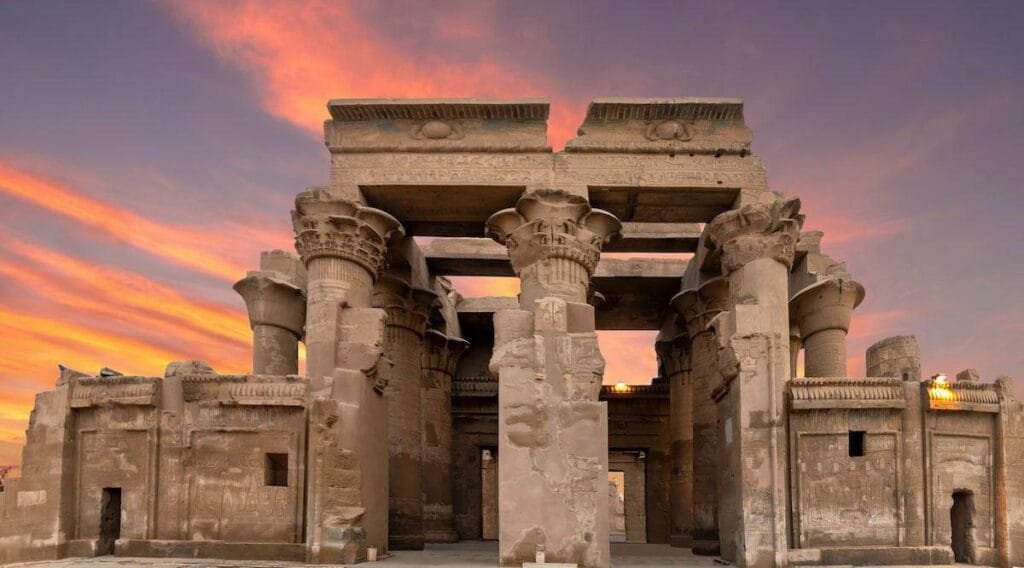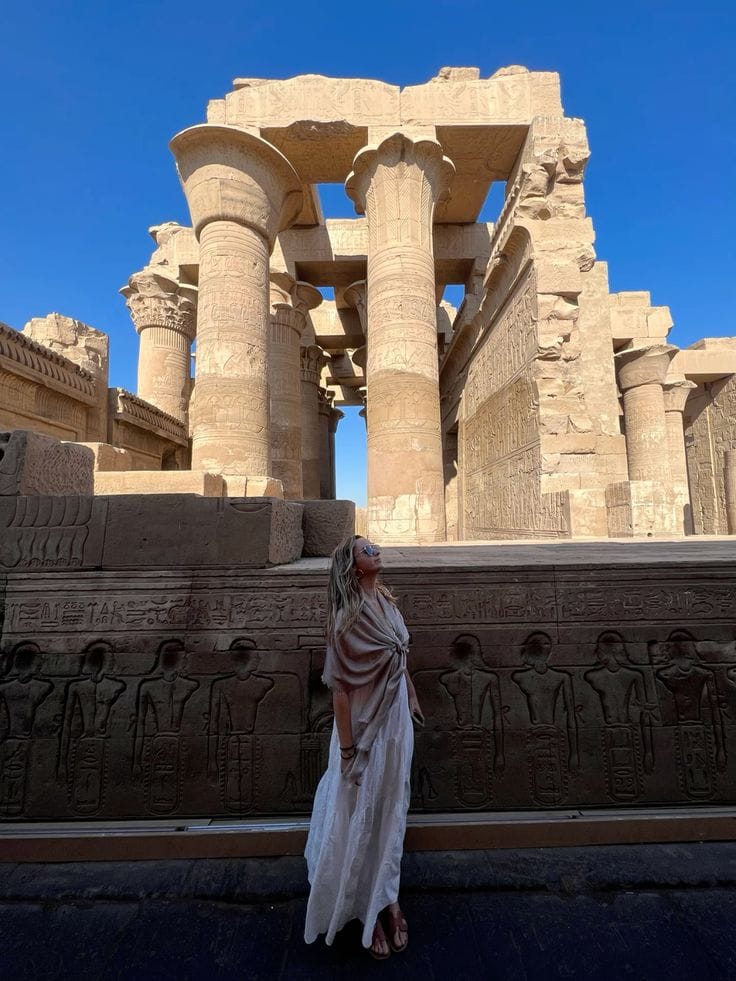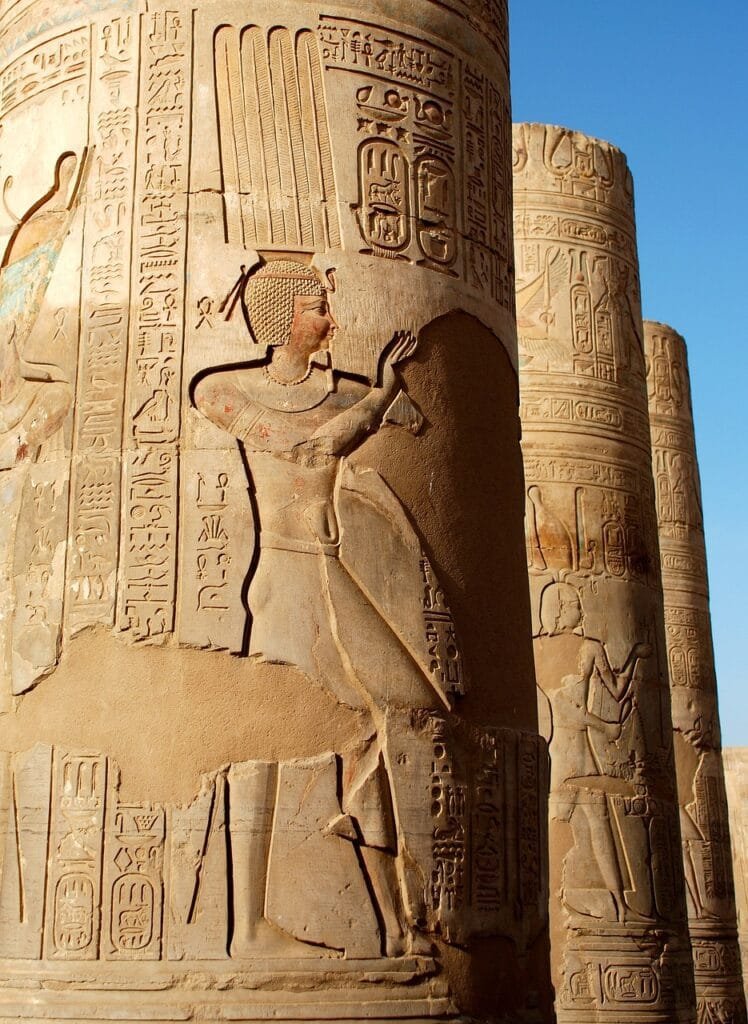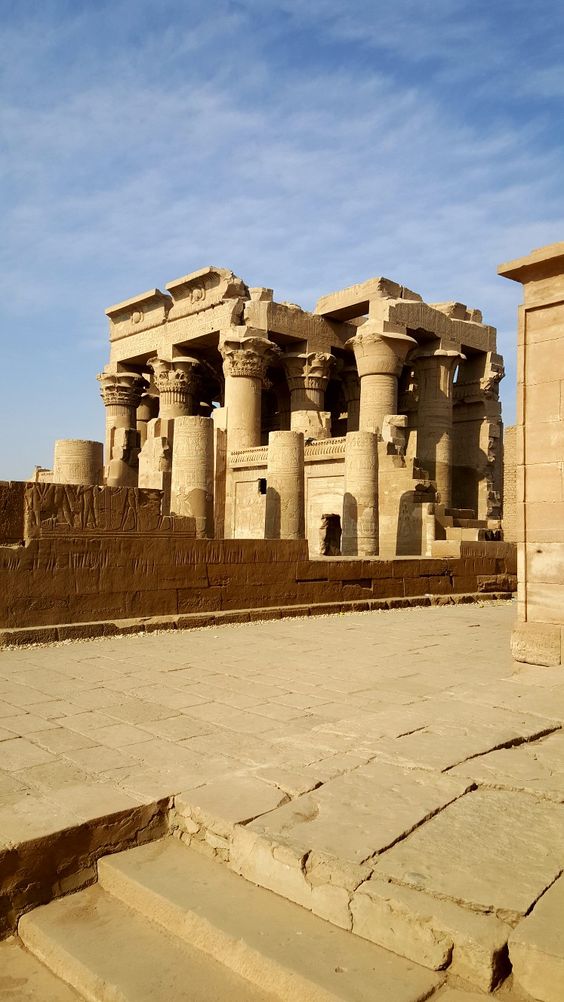The Temple of Kom Ombo is one of Egypt’s most intriguing and unique temples, standing proudly on the banks of the Nile River. Unlike other temples that are dedicated to a single god, the Temple of Kom Ombo is a rare dual temple, dedicated to two deities—Sobek, the crocodile-headed god of fertility and protection, and Horus the Elder, the falcon-headed god of kingship and the sky. The temple was constructed during the Ptolemaic Dynasty, between 180–47 BCE, during the reigns of Ptolemy VI and Ptolemy VIII. The Ptolemaic period was marked by a blend of Egyptian and Greek culture, and this fusion is clearly visible in the architecture of the temple, which incorporates both Egyptian religious themes and Greek architectural influences.
Kom Ombo’s unusual design and duality of worship make it stand out from many other temples in Egypt. The fact that it was dedicated to two gods represents an interesting blend of religious and cultural practices, both for the local people and the ruling Ptolemaic dynasty. The temple not only served religious purposes but also had a practical role for the community, particularly in agricultural matters. The Egyptians used the temple to track the flooding of the Nile, which was critical for crop irrigation and understanding the flow of the river.
Today, the Temple of Kom Ombo remains a significant archaeological site and a popular tourist destination. Its preservation allows modern-day visitors to marvel at the stunning architecture and intricate carvings that adorn its walls, providing insight into the daily rituals and beliefs of ancient Egyptians. As a site where two gods are honored simultaneously, the temple continues to captivate those interested in Egypt’s complex religious practices and history.








